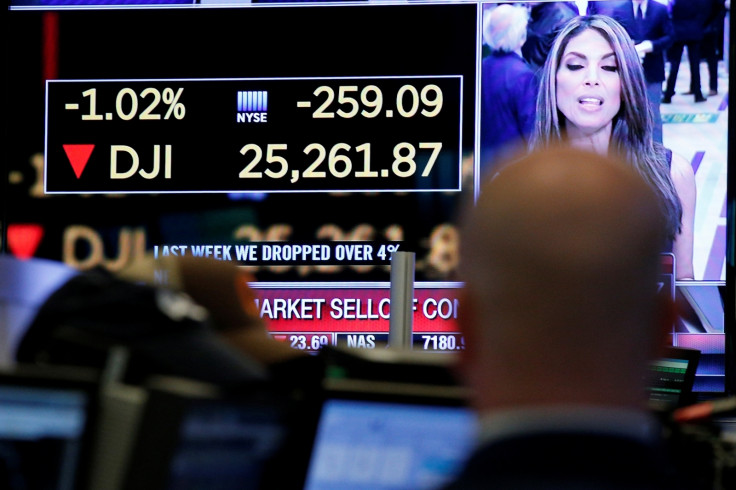U.S. employers added over 100,000 jobs in March, down on February figures
The unemployment rate remained at 4.1 percent, a 17-year low

U.S. employers added a modest 103,000 jobs in March after several months of robust gains, though the government's overall jobs report Friday suggested that the labor market remains fundamentally healthy.
The unemployment rate remained at 4.1 percent, a 17-year low, for a sixth straight month, the government said. Average hourly pay ticked up, climbing 2.7 percent compared with a year earlier.
The government also revised down its estimate of job growth for January and February by a combined 50,000. Still, over the past six months, employers have added a healthy average of 211,000 jobs, evidence that hiring in the United States remains strong and the economy on solid footing in its ninth year of recovery from the Great Recession.
The pullback in hiring last month was likely payback for an explosive gain in February, economists said. Employers added 326,000 jobs that month — the largest monthly haul in two years.
"Overall, looking through the volatility, employment growth is trending higher and wage growth is starting to heat up," said Paul Ashworth, an economist at Capital Economics.
March's tepid job gain may make it slightly more likely that the Federal Reserve will raise short-term interest rates just twice more this year, rather than three more times. Last month, the Fed modestly raised its benchmark rate to a still-low range of 1.5 percent to 1.75 percent.
The Fed's policymakers signaled at that meeting that a total of three rate increases were likely this year. But some economists have speculated that if further signs of rapid economic growth emerged, the Fed would raise rates faster to try to keep inflation under control.
The stock market fell sharply in mid-day trading, mostly in response to the latest round of threats by President Donald Trump to impose additional tariffs on Chinese imports. The Dow Jones industrial average fell nearly 400 points.
Last month's modest job gain may indicate that some employers want to hire more but are struggling to find the workers they need. A separate government report last month showed that there was nearly one open job for every unemployed person, the lowest ratio on records dating back two decades.
Edward Daniel, chief executive of Metropolitan Health Services, says he has raised pay and sweetened benefits to try to fill his 740-person company's roughly 80 open jobs. Daniel's firm, based in Herndon, Virginia, provides services to hospitals, such as valet parking and "sitters," who stay with elderly or mentally ill patients after they've been sent home from operations.
"Across the board, hiring is a challenge," Daniel said.
His pay for sitters has increased from $10 to $12 an hour, mostly to keep up with raises at retailers and fast food restaurants.
The company now offers a 401(k) to all employees after 30 days on the job and provides a prescription drug discount card. By June of next year, it plans to pay half its employees' educational costs.
It's a big change, Daniel said, from a decade ago, when the company offered no benefits at all. Since then, the company's business has grown steadily.
Some of the drop-off in hiring for March was likely weather-related, with late spring snowstorms blanketing the Northeast, closing construction sites and potentially postponing shopping trips for spring clothes. Construction companies cut 15,000 jobs, the sharpest monthly drop in three years, after five months of big gains. Retailers shed 4,400. Hotels and restaurants added just 4,300 workers, the fewest in six months.
Some higher-paying sectors still posted solid gains: Manufacturers added 22,000 jobs. Professional and business services, which include such fields as accounting and architecture, gained 33,000.
The U.S. economy appears to be sturdy, with the recovery from the 2008-2009 Great Recession now the second-longest expansion since the 1850s, when economists began tracking recessions and recoveries. Still, the expansion has been puzzlingly slow, with economic growth averaging just 2.2 percent a year — about a percentage point below the historical average. But its durability has been broadly beneficial.
For example, a rising number of working-age Americans have begun looking for a job and finding one, reversing a trend from the first few years after the recession when many of the unemployed grew discouraged and stopped looking for work.
An increasing need to compete for workers may also finally be lifting wages in some sectors. Yet the steady influx of new workers, which gives employers more hiring options than the low unemployment rate might otherwise suggest, may be holding back overall pay growth.
Though the economy likely slowed in the first three months of this year, economists expect growth will rebound in the coming months. Macroeconomic Advisers, a consulting firm, forecasts that the economy grew at just a 1.4 percent annual rate in the January-March quarter — less than half the 2.9 percent annual pace of the October-December quarter. But the firm expects growth to rebound to a decent 3.1 percent annual pace in the current April-June quarter.
Other reports indicate that growing optimism among businesses and consumers should help propel the economy in the months ahead.
Businesses have stepped up their spending on manufactured goods, helping lift factory output. And last month, factories expanded at a healthy pace after having grown in February at the fastest rate since 2004, according to a private survey.
© Copyright IBTimes 2025. All rights reserved.





















